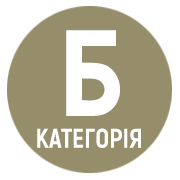RUSSIA'S WAR AGAINST UKRAINE AND SOME ISSUES OF PSYCHOANALYTIC TRAINING
DOI:
https://doi.org/10.32782/upj/2023-1-8Keywords:
psychoanalytic education, psychoanalytic training, Russian invasion, Ukraine, warAbstract
The article discusses the observed challenges to the psychoanalytic training of specialists during Russia's war against Ukraine and the proposal of current and permanent ways to respond to them. First, the author made a brief theoretical overview of the goals and objectives of classical and modern psychoanalytic education and analyzed its vulnerabilities and disadvantages described in professional psychoanalytic literature. Based on her own observations during the war between Russia and Ukraine, the author discusses four strong and three weak positions, which are considered the consequences of psychoanalytic training. To the positive aspects that strengthened the practice of psychoanalytic specialists in the conditions of military invasion, the author attributes 1) the ability of specialists to determine the lack of knowledge, skills, and strength and to ask for help; 2) formed self-care skills as prevention or mitigating of the development of vicarious trauma; 3) the ability to maintain the logic of timeliness and delayed action, as well as to invest in the future, as opposed to the logic of urgency and the breaking of time, given by the horror of war; 4) interest and curiosity about the mental processes provoked by the war turned out to be more important than the "devotion" to psychoanalysis. Among the weak points that sometimes occur in psychoanalytic training programs, she noted: 1) gaps in knowledge of the ethical requirements of the country and the profession, in particular regarding the conduct of legal practice; 2) a tendency to form a professional identity instead of professional competence; 3) implicit promotion of lack of empathy and arrogance. Based on the results of the discussion and analysis of the observed challenges to the psychoanalytic training of specialists, the author proposed three aspects that can be the focus of attention for further improvement: 1) ethics of the goals of psychoanalytic education; 2) ethics of scientific discussion; 3) ethics of psychoanalytic practice.
References
Bagan, K. (2023). Loneliness in times of war. Psychoanalysis, Self and Context, 18(3), 401–406. https://doi.org/10.1080/24720038.2023.2209610
Benvenuto, S. (2022). Psychoanalysis in the War. A debate with Russian colleagues. European Journal of Psychoanalysis. Issue ‘Lights Ablaze from Ukraine and Russia’. https://www.journal-psychoanalysis.eu/article s/psychoanalysis-in-the-war-a-debate-with-russian-colleagues/
Boesky, D. (2002). Why don’t our institutes teach the methodology of clinical psychoanalytic evidence? The Psychoanalytic Quarterly, 71(3), 445–475. https://doi.org/10.1002/j.2167-4086.2002.tb00521.x
Busch, F. (2020). Dear Candidate: Analysts from around the World Offer Personal Reflections on Psychoanalytic Training, Education, and the Profession. Routledge.
Danylevska, K. & Haber, D. (2023). Interview with Kateryna Danylevska by Darren Haber: Speaking through the sirens. Psychoanalysis, Self and Context, 18(3), 407–411. https://doi.org/10.1080/24720038.2023.2202084
Dorozhkin, V. (2023). Therapeutic Relationships in Wartime Ukraine. Psychoanalytic Psychology, 40(4). http://doi.org/10.1037/pap0000482
Eisold, K. (2004). Psychoanalytic training: the “faculty system”. Psychoanalytic Inquiry, 24(1), 51–70.
Elise, D. (2019). Creativity and the erotic dimensions of the analytic field. Routledge.
Esse-Chukanova, A., & Haber, D. (2023). A dialogue with Alyona Esse-Chukanova: “We have to continue”. Psychoanalysis, Self and Context, 18(3), 339–344. https://doi.org/10.1080/24720038.2023.2202082
Fedorets, O. (2023). Counseling on the front line: Insights from a Ukrainian doctor. Psychoanalysis, Self and Context, 18(3), 345–351. https://doi.org/10.1080/24720038.2023.2209129
Filts, O. & Haber, D. (2023). Discussion with Oleksandr Filts: Trauma, digression, and detoxification. Psychoanalysis, Self and Context, 18(3), 427–436. https://doi.org/10.1080/24720038.2023.2203027
Flint, S.M. (2018). Preventing vicarious trauma in counselors through the implementation of self-care practices. Alabama Counseling Association Journal, 42(1), 111–127.
François‐Poncet, C.M. (2009). The French model of psychoanalytic training: Ethical conflicts. The International Journal of Psychoanalysis, 90(6), 1419–1433.
Frankova, I., Vermetten, E., Shalev, A.Y., Sijbrandij, M., Holmes, E.A., Ursano, R., Zohar, J. (2022). Digital psychological first aid for Ukraine. The Lancet Psychiatry. https://doi.org/10.1016/S2215-0366(22)00147-X
Hinze, E. (2015). What do we learn in psychoanalytic training? The International Journal of Psychoanalysis, 96(3), 755–771.
Ilyukhina, A. (2023). Siblings in wartime treatment: A Ukrainian perspective. Psychoanalysis, Self and Context, 18(3), 412–415. https://doi.org/10.1080/24720038.2023.2209612
Johansson, J. (2023, July). Does it still taste like psychoanalysis? Experiences of collaborating with universities in psychoanalytic training. International Forum of Psychoanalysis, 1–8. Routledge.
Kechur, R., & Haber, D. (2023). An exchange with Roman Kechur: Preserving thinking during wartime. Psychoanalysis, Self and Context, 18(3), 364–378. https://doi.org/10.1080/24720038.2023.2203028
Kernberg, O.F. (1996). Thirty methods to destroy the creativity of psychoanalytic candidates. The International Journal of Psycho-Analysis, 77(5), 1031.
Kernberg, O.F. (2012). Suicide prevention for psychoanalytic institutes and societies. Journal of the American Psychoanalytic Association, 60(4), 707–719. https://doi.org/10.1177/0003065112449861
Kernberg, O.F. (2016). Psychoanalytic education at the crossroads: Reformation, change and the future of psychoanalytic training. Routledge.
Klein, M. (1960). A note on depression in the schizophrenic. The International Journal of Psycho-Analysis, 41, 509.
Klymchuk, V., Vysotska, K., & Gorbunova, V.V. (2022). Decentralisation and community stakeholders’ engagement for better mental health services development in the conflict-affected regions of Ukraine, Journal of Public Mental Health, 21(4), 288–302. https://doi.org/10.1108/JPMH-06-2022-0054
Kolstø, P. (2007). The ‘Narcissism of Minor Differences’ - Theory. Can It Explain Ethnic Conflict? Filozofija i društvo, 33, 153–173.
Körner, J. (2002). The didactics of psychoanalytic education. The International Journal of Psychoanalysis, 83(6), 1395–1405.
Kurapov, A., Danyliuk, I., Loboda, A., Kalaitzaki, A., Kowatsch, T., Klimash, T., & Predko, V. (2023). Six months into the war: a first-wave study of stress, anxiety, and depression among in Ukraine. Frontiers in Psychiatry, 14, 1190465. https://doi.org/10.3389/fpsyt.2023.1190465
Lacan, J. (1975). La troisième. Lettres de l’École freudienne, 16, 177–203.
Lacan, J. (2011). The seminar of Jacques Lacan: Book IX: Identification, 1961–1962.
Lacan, J. (2013). The ethics of psychoanalysis 1959-1960: The seminar of Jacques Lacan. Routledge.
Lashko, O. (2023). View from Ukraine: Bearing witness under assault. Psychoanalysis, Self and Context, 18(3), 352–354. https://doi.org/10.1080/24720038.2023.2203718
Lazos, G. (2023). Transformation of psychotherapeutic relationships during the war. Psychoanalysis, Self and Context, 18(3), 382–387. https://doi.org/10.1080/24720038.2023.2203158
Lesourd, S. (2012). Une grande personne n’est pas un adulte. La lettre de l’enfance et de l’adolescence, 2, 139–144.
Luborsky, L., & Barrett, M.S. (2006). The history and empirical status of key psychoanalytic concepts. Annual Review of Clinical Psychology, 2, 1–19. https://doi.org/10.1146/annurev.clinpsy.2.022305.095328
Lushyn, P. (2023). Constructing the future during wartime adversity: Exile notes of a Ukrainian Psychologist. Psychoanalysis, Self and Context, 18(3), 437–443. https://doi.org/10.1080/24720038.2023.2209139
Lynn, D.J., & Vaillant, G.E. (1998). Anonymity, neutrality, and confidentiality in the actual methods of Sigmund Freud: A review of 43 cases, 1907–1939. American Journal of Psychiatry, 155(2), 163–171.
Matiashova, L., Tsagkaris, C., Essar, M.Y., Romash, I.B. & Vus, V.I. (2022). Achilles in Ukraine: Concerns and priorities over the long-term implications of trauma. The International Journal of Health Planning and Management, 37(6), 3369–3371. https://doi.org/10.1002/hpm.3562
McWilliams, N. (2020). The future of psychoanalysis: Preserving Jeremy Safran’s integrative vision. Psychoanalytic Psychology, 37(2), 98–107. https://doi.org/10.1037/pap0000275
Mirza, O., & Romanov, I. (2022). Letter from the Ukrainian Psychoanalytic Society. The International Journal of Psychoanalysis, 103(3), 427–430. https://doi.org/10.1080/00207578.2022.2066275
Nalyvaiko, N. (2023). Borders and Psychoanalysis in a Time of War. Psychoanalytic Psychology, 40(4). http://doi.org/10.1037/pap0000485
Novick, J., & Novick, K.K. (2022). Training life-cycle psychoanalysts: Integrated psychoanalytic education. The Psychoanalytic Study of the Child, 75(1), 343–351. https://doi.org/10.1080/00797308.2021.2006555
Ogden, T.H. (2010). On three forms of thinking: Magical thinking, dream thinking, and transformative thinking. The Psychoanalytic Quarterly, 79(2), 317–347. https://doi.org/10.1002/j.2167-4086.2010.tb00450.x
Orange, D.M. (2015). Nourishing the inner life of clinicians and humanitarians: The ethical turn in psychoanalysis. Routledge.
Ostashova, K. (2023). Letter from Lviv: Symbolic thinking in the face of tragedy. Psychoanalysis, Self and Context, 18(3), 379–381. https://doi.org/10.1080/24720038.2023.2205783
Palii, V., Velykodna, M., Pereira, M., McElvaney, R., Bernard, S., Klymchuk, V. …, Gómez-Maquet, Y. (2023). The experience of launching a psychological hotline across 21 countries to support Ukrainians in wartime. Mental Health and Social Inclusion, 27. https://doi.org/10.1108/MHSI-04-2023-0040
Pavlovska, O. (2023). Psychoanalytic Work with Losses During the War: The Ukrainian Experience. Psychoanalytic Psychology, 40(4). http://doi.org/10.1037/pap0000479
Pinchuk, I., Goto, R., Pimenova, N., Kolodezhny, O., Guerrero, A., and Skokauskas, N. (2022). “Mental health of helpline staff in Ukraine during the 2022 Russian invasion”. European Psychiatry, 65(1), E45. https://doi.org/10.1192/j.eurpsy.2022.2306
Ramachandran A., Makhashvili N., Javakhishvili J., Karachevskyy A., Kharchenko N., Shpiker M., Ezard N., Fuhr D.C., Roberts B. (2019). Alcohol use among conflict-affected persons in Ukraine: Risk factors, coping and access to mental health services. European Journal of Public Health, 29(6), 1141–1146. https://doi.org/10.1093/eurpub/ckz117
Reeder, J. (2004). Hate and Love in Pyschoanalytical Institutions. Other Press, LLC.
Romanov, I. (2023). The war inside: Unconscious experience of war in a patient and an analyst. KnotGarden, 2, 67–85.
Rudenko, R. (2023). Traveling through the worlds: new challenges in therapy with children, adolescents and their families during the war. Psychoanalytic Psychology, 40(4). http://doi.org/10.1037/pap0000481
San Martino, M. (2003). Problems in psychoanalytic education. Journal of the American Psychoanalytic Association, 51(1), 301–309.
Singer, S. Sievers, L., Scholz, I., Taylor, K., Blanck, J. & Maier, L. (2023). Who seeks psychodynamic psychotherapy in community-based practices? Patient characteristics examined in a large sample of applications for reimbursement of psychotherapy in Germany, Psychodynamic Practice, 29(2), 117–135. DOI: https://doi.org/10.1080/14753634.2023.2182702
Schachter, J. (2018). Free association: From Freud to current use – the effects of training analysis on the use of free association. Psychoanalytic Inquiry, 38(6), 457–467.
Sharma, S., & Fowler, J.C. (2018). Restoring hope for the future: Mentalization-based therapy in the treatment of a suicidal adolescent. The Psychoanalytic Study of the Child, 71(1), 55–75.
Solano, P., Vargiu, M., & Zaitseva, K. (2023). Voices from the war: Some notes on the emotional experience of the war in Ukraine told by two Ukrainian psychoanalysts. International Forum of Psychoanalysis, 1–6. Routledge.
Stefana, A., Celentani, B., Dimitrijevic, A., Migone, P., & Albasi, C. (2021). Where is psychoanalysis today? Sixty-two psychoanalysts share their subjective perspectives on the state of the art of psychoanalysis: A qualitative thematic analysis. International Forum of Psychoanalysis, 30(4), 234–246. https://doi.org/10.1080/0803706X.2021.1991594
Symulyk, V., & Haber, D. (2023). Feeling human again: An exchange between Viktoria Symulyk and Darren Haber. Psychoanalysis, Self and Context, 18(3), 388–400. https://doi.org/10.1080/24720038.2023.2205785
Szecsödy, I. (2003). To become or be made a psychoanalyst. The Scandinavian Psychoanalytic Review, 26(2), 141–150.
Thomä, H. (2013). Training analysis and psychoanalytic education: Proposals for reform. The Annual of Psychoanalysis, 21, 3–75. Routledge.
Tuckett, D. (2005). Does anything go? Towards a framework for the more transparent assessment of psychoanalytic competence. The International Journal of Psychoanalysis, 86(1), 31–49.
Velykodna, M., Dorozhkin, V., Nalyvaiko, N., Yevlanova, E. & Lunov, V. (2022). Life and death of psychoanalytic societies – Lessons from history and new prospects for unions: Conference Report, Kyiv, Ukraine. Psychodynamic Practice, 3. http://doi.org/10.1080/14753634.2022.2064351
Velykodna, M. (2023). A Psychoanalyst’s Experience of Working in Wartime: On Choosing Between Bad Options. Psychoanalytic Psychology, 40(4). http://doi.org/10.1037/pap0000480
Vives, J.M., & Vinot, F. (2014). Les médiations thérapeutiques par l'art: Le Réel en jeu. Eres.
Wille, R.S.G. (2008). Psychoanalytic Identity: Psychoanalysis as an Internal Object. The Psychoanalytic Quarterly, 77(4), 1193–1229. DOI: 10.1002/j.2167-4086.2008.tb00380.x
Yevlanova, E. (2023). Professional Supervision as Therapists’ Self-Care during Wartime. Psychoanalytic Psychology, 30(4). http://doi.org/10.1037/pap0000486
Zaitseva, K. (2023). The war in Ukraine. The suffering and the losses, the hope and the struggle for freedom. In Leo, G. (Ed.) Why War In Ukraine and Europe? Psychoanalysis, Trauma and Resiliency, 121–134. Frenis Zero publishing house.



